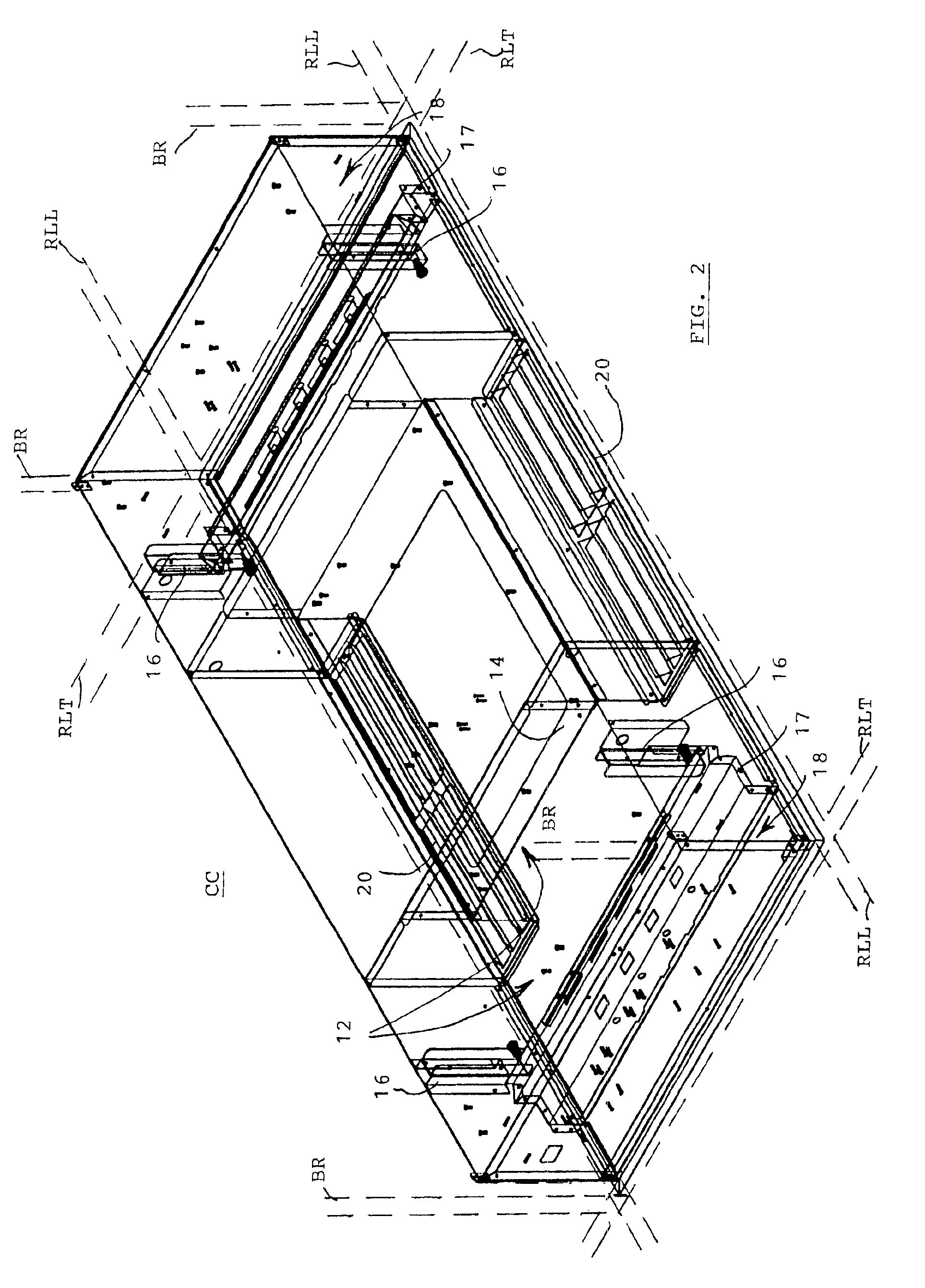UV air cleaning and disinfecting system
a technology of uv air and disinfecting system, which is applied in the direction of auxillary pretreatment, heating type, separation process, etc., can solve the problems of low air throughput, low efficiency of uv units in hvac systems, and relatively low amount of uv exposure of pathogens per unit volume of air processed, so as to achieve effective and efficient uv air cleaning and disinfecting system, high inactivation
- Summary
- Abstract
- Description
- Claims
- Application Information
AI Technical Summary
Benefits of technology
Problems solved by technology
Method used
Image
Examples
Embodiment Construction
Referring to FIG. 1, a UV air cleaning and disinfecting system has an enclosed chassis CC provided with an inlet / outlet surface panel SP that faces down from a ceiling surface. The surface panel SP has a longitudinal length along axis LL and a latitudinal width along axis LT. The chassis is to be mounted in a space behind a ceiling surface of a room space with its surface panel substantially coplanar with the ceiling surface and facing into the room space. A pair of inlet vent arrays 10 formed in the inlet / outlet surface panel SP receives incoming air into the chassis. the inlet vent arrays 10 are positioned spaced apart on opposite longitudinal sides of the surface panel from each other. A pair of outlet vent arrays 20 in the surface panel delivers outgoing (cleaned and disinfected) air from the chassis. The outlet vent arrays are spaced apart on opposite latitudinal sides of the surface panel from each other. The four-leaf-clover pattern of mutually circulating air streams in the ...
PUM
| Property | Measurement | Unit |
|---|---|---|
| length | aaaaa | aaaaa |
| length | aaaaa | aaaaa |
| depth | aaaaa | aaaaa |
Abstract
Description
Claims
Application Information
 Login to View More
Login to View More - R&D
- Intellectual Property
- Life Sciences
- Materials
- Tech Scout
- Unparalleled Data Quality
- Higher Quality Content
- 60% Fewer Hallucinations
Browse by: Latest US Patents, China's latest patents, Technical Efficacy Thesaurus, Application Domain, Technology Topic, Popular Technical Reports.
© 2025 PatSnap. All rights reserved.Legal|Privacy policy|Modern Slavery Act Transparency Statement|Sitemap|About US| Contact US: help@patsnap.com



